Subbuteo and me: The story of how a table football game became an icon
Lawrence Lambert delves into the history of the beautiful tabletop game
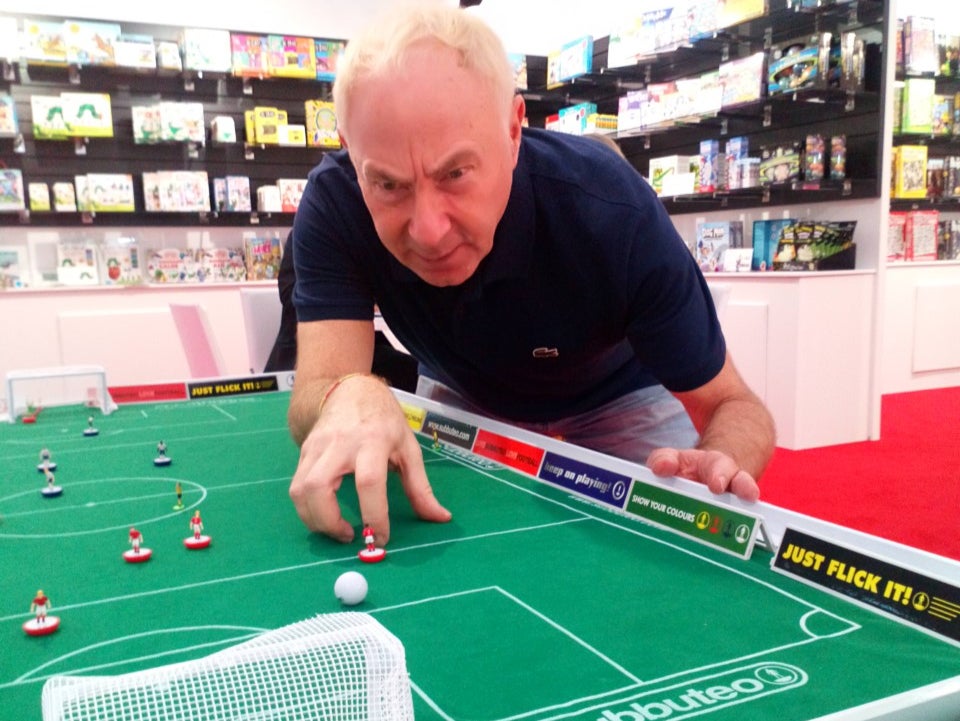
Langton Green was on my bucket list for places to visit before I leave this planet. Before you start looking it up on Google Maps, it’s a small village in Kent, just a few miles from Tunbridge Wells. Its significance will be immediately apparent to those in the know. It was the name emblazoned on the box of every miniature table football game or football team box of Subbuteo (the game was literally manufactured there way back at the start in the early Fifties and on into the Sixties and Seventies).
Last year, I finally made my own personal pilgrimage to the site of the old factory in Kent, to pay my homage to a place which is now a high street printers with little more than a hint in the air of what used to be created on the spot.
Peter Adolph created Subbuteo just after the war. A keen young engineer and avid ornithologist, he came up with an idea for a table football game where the players never fell over once they were flicked with an index finger to kick a miniature ball. The trick was to insert a ring-shaped metal washer in the playing figure’s base, so it would remain upright through the proportion of its weight once propelled by the fingers. Ingenious!
Adolph started advertising the game in a local magazine after perfecting the design in his kitchen, with a five shillings price tag and headline reading: “All the excitement of a new soccer game.” All before he had manufactured a single part of it. To his surprise, he was inundated with a huge number of postal orders from young boys and their dads all around the country. So much so, that the advertising risk paid off and he was able to persuade the bank for a loan to aid with the immediate manufacture and subsequent launch of his new game.
As to what to call it, names like Table Football had already been patented by other manufacturers so, after some deliberation, he decided to name it after one of his favourite birds, Subbuteo Subbuteo. And so Subbuteo was born.
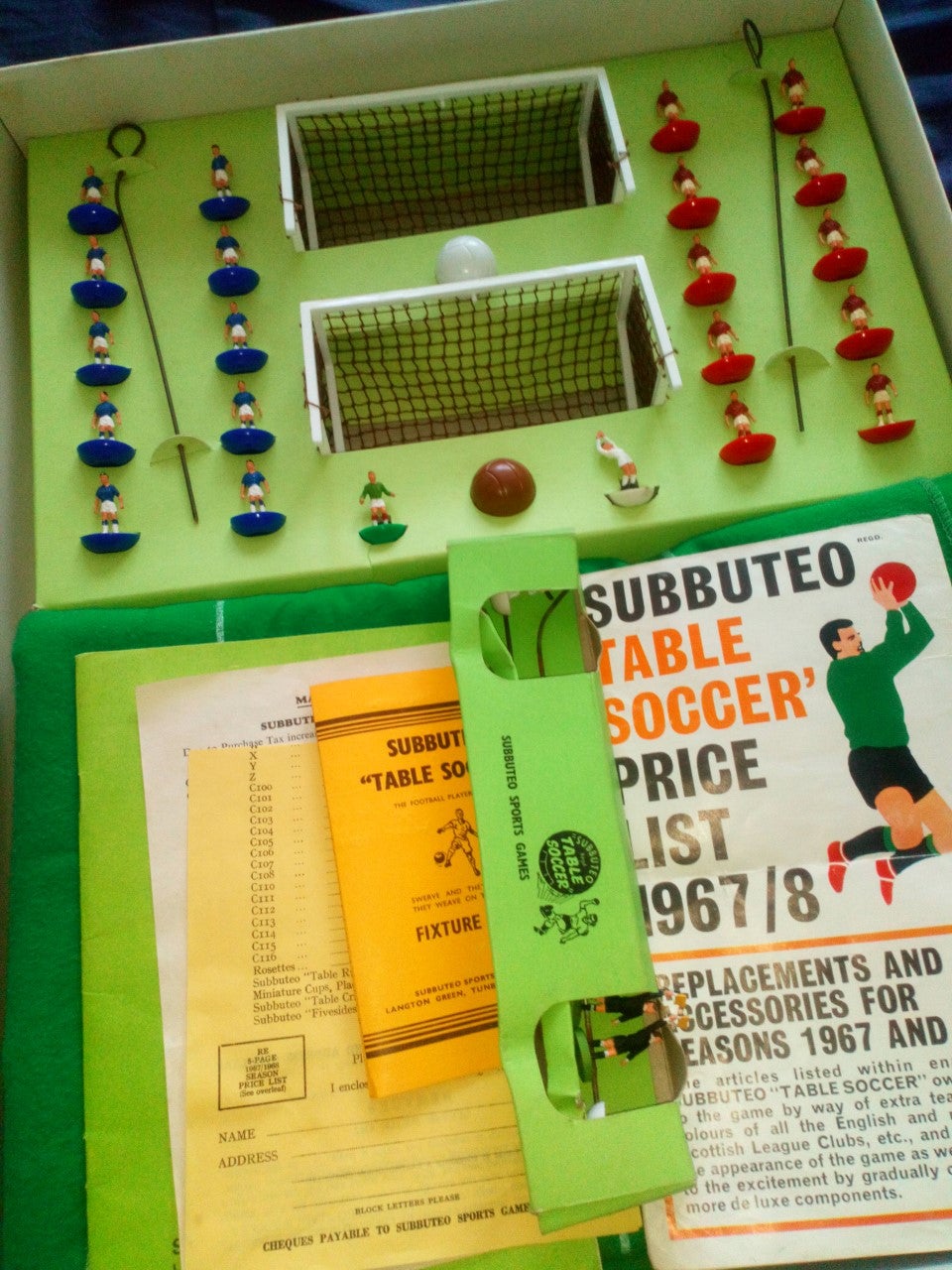
The first sets were hastily dispatched with each game containing two flat cardboard playing teams of 11 players on a spherical base, two goals and a ball, but no pitch to play on. Rather, a stick of chalk and an pamphlet instructing players on how to mark out a football pitch on a blanket used back then by most homes in air raid shelters (as it happens, an ideal surface for the nuance of the players’ movement). The year was 1947.
As the popularity of the game grew in the 1950s and the early ’60s, so did the design of the players and the game’s manufacturing advancement. Adolph acquired an office and workshop space in nearby Langton Green, which became his headquarters and the family’s home for the next two decades. The game’s advancement was massive, particularly in the material of the players, now a flat celluloid figure on a base, and the idea of include different teams in each box that sported the colours of the famous teams of the day. Newcastle United in black and white stripes, Wolves in old gold, Arsenal in red and white and Adolph’s beloved QPR in blue and white hoops, which coincidently has been my beloved team since boyhood too.
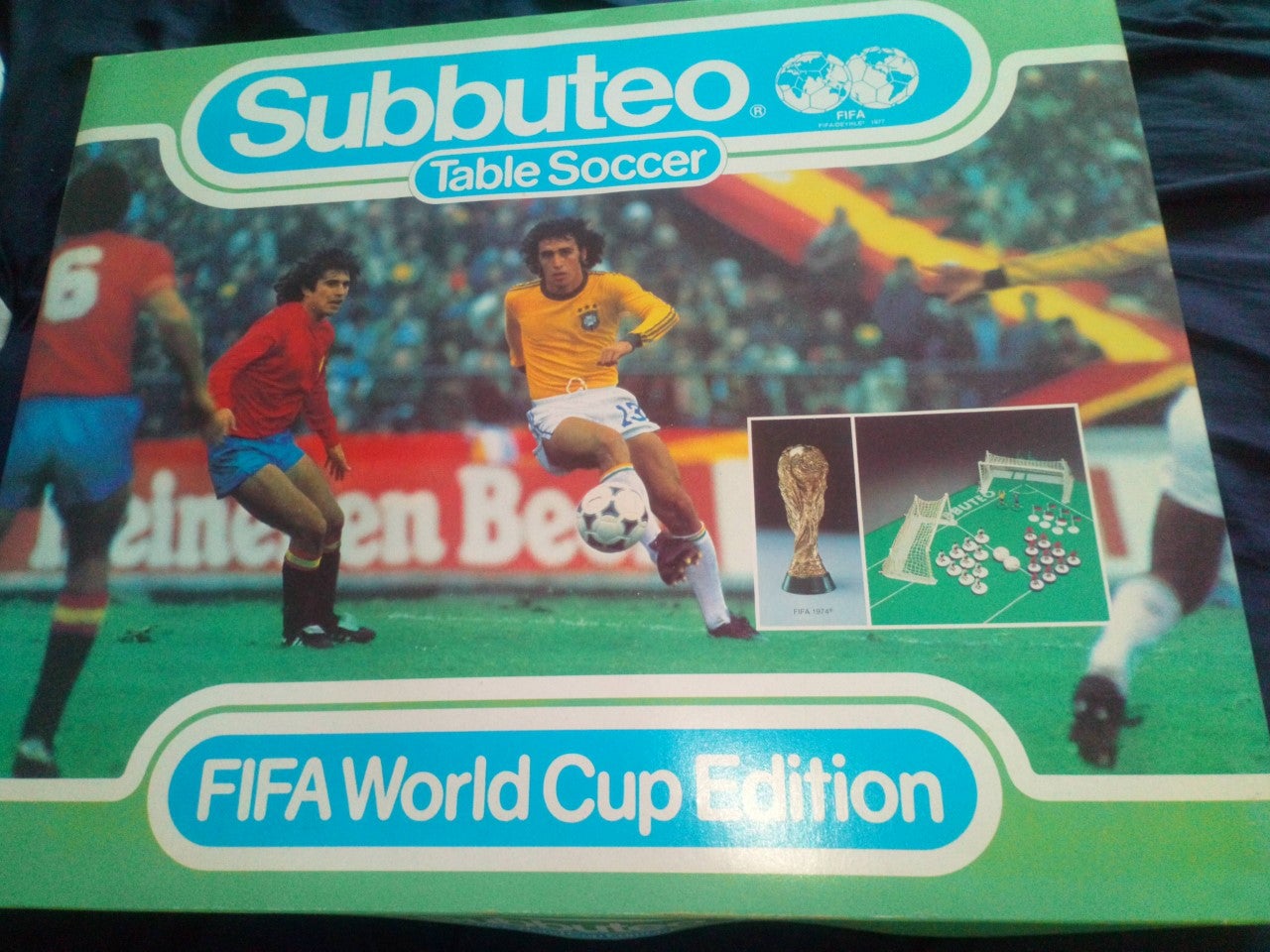
As the demand for the game grew, so too did Adolph’s workforce. Neighbours in Langton Green were recruited to paint individual heavyweight plastic players, renamed “walkers” because their moulded stance. Each team now comprised of 10 three-dimensional plastic moulds almost an inch high and were advertised as accessories to the main game, which now came with a marked out playing pitch made of green baize. Many families took on the task and were paid 1d (an old penny) per painted player. More and more teams became available, from Blackburn Rovers’ blue and white halves to Partick Thistle’s red and yellow stripes. All English and Scottish football league teams were now being represented. The deadline for the completion of painting each team was tight and the pressure was felt by those doing the painting to meet it.
Adolph’s initial main rival, besides Blow Football, was a table football game called New Footy, similar in appearance but not with his ingenious engineering technology of the weighted base of the player. In time, though, Subbuteo began to dominate the market and started to catch the eye of the bigger toy manufacturers.
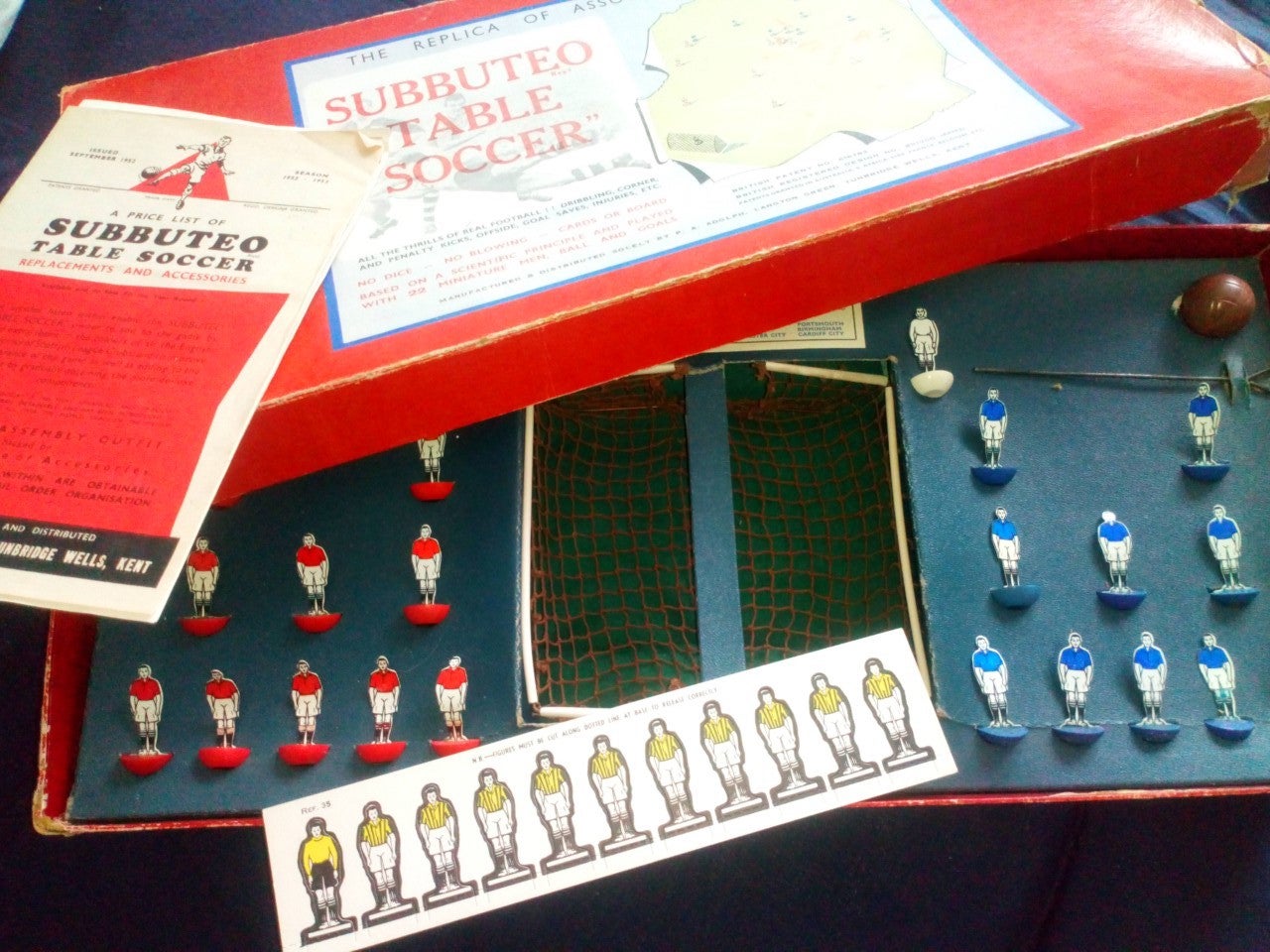
By now, the range of teams included overseas and World Cup favourites of the time like Brazil, Peru, West Germany and Uruguay, yet you could still go along to your local stockist and buy Rochdale or Tranmere Rovers, all adorned in their current playing team colours. This international idea naturally led to the release of larger gift sets depicting a World Cup tournament along with a selection of World Cup teams all taking part in a giant display box, and led to overseas sales in Europe. Ironically, the bigger sets never really took off as they were rather expensive and most customers buying Subbuteo already had the equipment needed to stage any game of their choosing. Sets manufactured included the basic Club edition, which contained a red and white and blue and white team, a Continental edition and an International one, as well as the larger World Cup set. But the real strength of the game was the plethora of teams available to purchase individually in their own colours, which now totalled over 150.
Inevitably, and not without a fight, in the mid-Seventies Adolph reluctantly sold the majority of his share in the patented company Subbuteo to Waddingtons, the giant games manufacturer, for an estimated quarter of a million pounds, a huge sum of money at the time. Diehards say a part of the game died then for, although it had its heyday in Sixties and Seventies, the later years saw the introduction of modern machine manufacturing and the loss of its home-made charm.
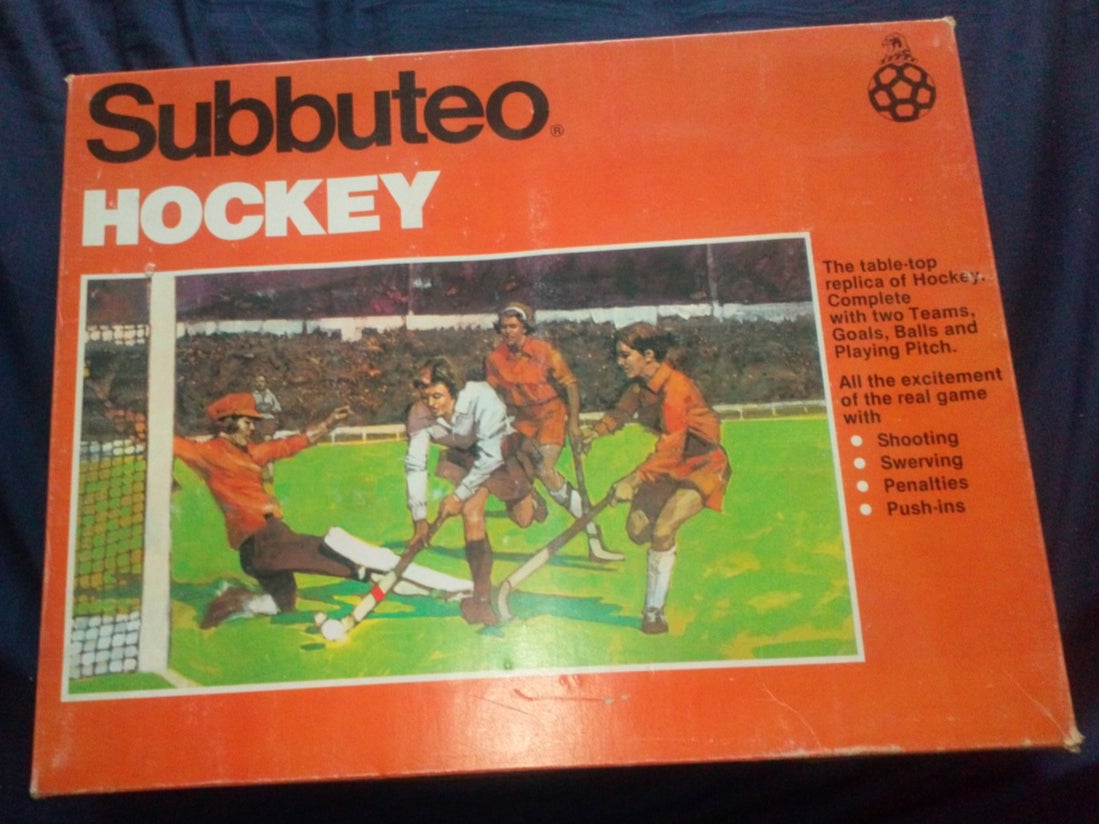
Of course, boys being boys, we had invented our own team names and players back then. Leagues sprung up throughout schools all around the country and cup tournaments were often staged at home on the carpet during lunch. Twenty minutes each way and back to school without eating! Some games were interrupted when a knee broke a goal crossbar or a fussy mum bringing in the sandwiches for you and your opponent at half time. One game at home against my brother Michael and his team named Lambstone Rovers was halted because Sparky, our cat, swallowed the ball. The game was abandoned at 1-1 and the vet’s advice was to let nature take its course, to which end our dad built a hardboard base for the pitch that could be put on a table.
A phenomenon literally took hold and one which certainly I suspect was beyond Adolph’s own vision. Even today, serious international world cup tournaments take place around the globe with a new generation of players. My team back then were called Lamford United. They enjoyed great success in the Seventies but were denied a unique domestic treble after Steve Hawkin’s Hearts Villa keeper saved a late penalty from Lamford striker Andy Blatter and we lost the FA cup final 1-0. It was a huge disappointment after having beaten Gerald Slowman’s Sky blues away in the sixth round and David Franklin’s Enfield Rovers in the semi-final after a long bus ride on the 259 from Turkey Street feeling ecstatic on the way home.
Today, vintage Subbuteo is still very collectable, strangely in Italy where it continues to have an extensive fan base. I’m glad to say that even today you can still buy a modern version, although it is somewhat diluted from the original. Original Scottish teams are the hardest to find, simply because there were fewer manufactured. World Cup sets are desirable when complete and contain the old Jules Rimet trophy, and obscure teams now defunct from the football league, like Barrow or Bury, evoke memories from days past in their old original playing colours.
Nothing gives me greater pleasure as an exponent of the game, and collector of what I think was the greatest game ever made, in finding an original Subbuteo team at a toy fair complete with no leg breaks mended with glue, and the charm of the crocked painted stripes or hoops on the players, knowing that someone had hand-painted them back in the day. Andy Blatter, the Lamford no 10, never did recover from that penalty miss and retired from the game shortly after but he remains a legend to this day, scoring over 100 for the club. Apparently there is a statue of him outside the Lambford United home ground in Finsbury Park.
Thanks Peter… truly magical!
Join our commenting forum
Join thought-provoking conversations, follow other Independent readers and see their replies
Comments



Bookmark popover
Removed from bookmarks